Learn English
Unlock Focus: Posture Tips for Better English Study

Maintaining proper posture can significantly boost your focus and concentration during study sessions. This is particularly beneficial when you are engaged in learning English, a task that demands sustained attention. Simple adjustments to your sitting or standing position can enhance alertness and improve your ability to absorb new information. By adopting better posture habits, you can create a more effective environment for mastering the English language.
Table of Contents
- Section 1: The Link Between Posture and Learning English Focus
- Section 2: Understanding the Science: How Posture Impacts Your Brain
- Section 3: Essential Posture Tips for Sitting While Studying
- Section 4: Exploring Standing and Movement for Enhanced Focus
- Section 5: Common Posture Mistakes to Avoid During Study Sessions
- Section 6: Integrating Good Posture into Your English Learning Routine
- Section 7: Beyond Posture: Combining Physical Well-being with Effective English Study
Section 1: The Link Between Posture and Learning English Focus
Maintaining good posture is more than just about comfort; it directly impacts your ability to concentrate, which is vital when you are learning English. When you slouch or sit incorrectly, you restrict blood flow and oxygen supply to your brain. This can make you feel tired, less alert, and easily distracted, making it harder to absorb new vocabulary, understand complex grammar, or follow spoken conversations. Conversely, sitting or standing with a straight back, relaxed shoulders, and feet flat on the floor allows for better circulation and deeper breathing. This increased oxygen flow helps keep your brain active and focused, reducing fatigue and improving your cognitive function. By consciously adopting better posture habits, you create a physical state that supports sustained mental effort, making your English study sessions more effective and productive.
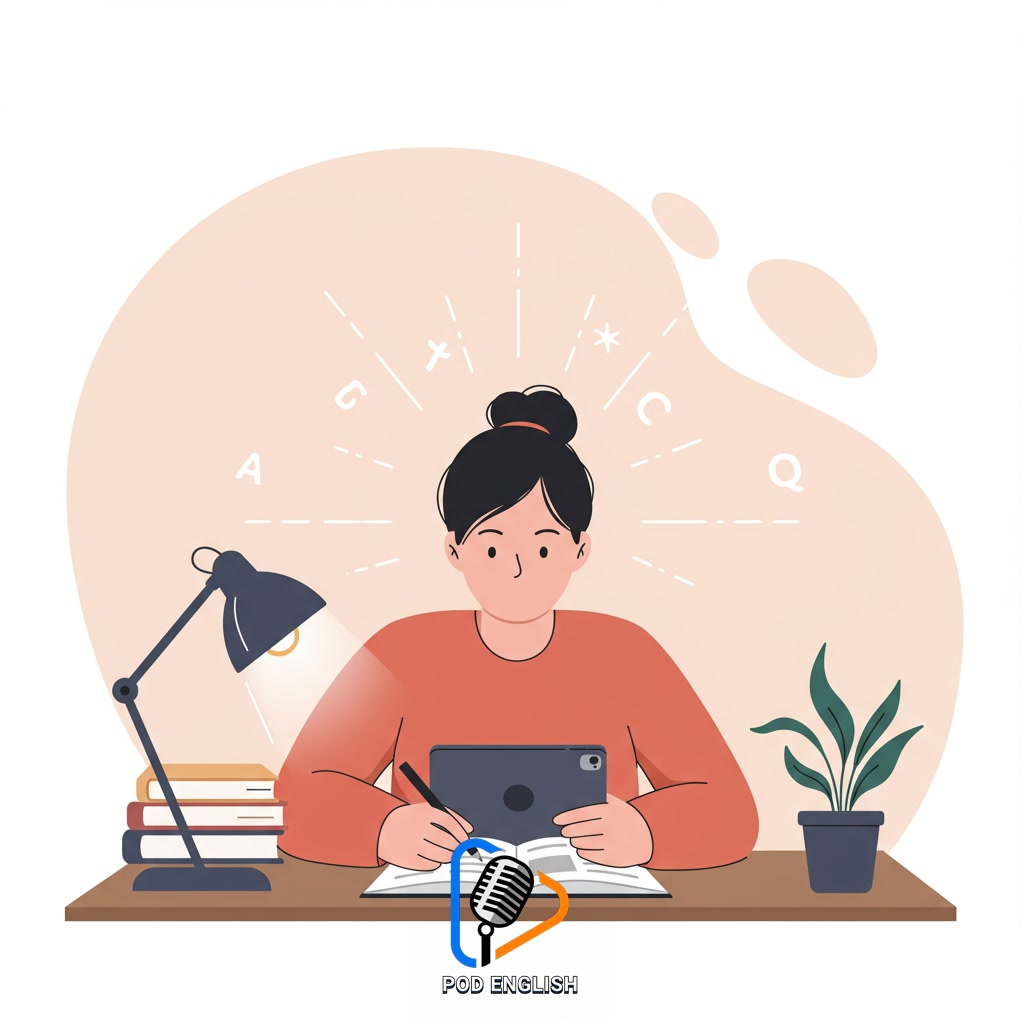
The Link Between Posture and Learning English Focus
Section 2: Understanding the Science: How Posture Impacts Your Brain
Building on the importance of concentration, this section delves into the science behind how posture impacts your brain function. When you adopt good posture, sitting or standing tall, you allow your lungs more space to expand, leading to deeper breathing and an increased supply of oxygen to your brain. Proper spinal alignment also facilitates optimal blood flow and nerve communication throughout your body, including to your head. This enhanced oxygenation and efficient signaling directly contribute to improved cognitive performance. An oxygen-rich brain is more alert, focused, and capable of processing and retaining information effectively, which is essential for absorbing complex English concepts, vocabulary, and grammar. Therefore, maintaining good posture isn’t just about physical comfort; it’s a simple yet powerful way to physically support your mental clarity and learning capacity during English study sessions.
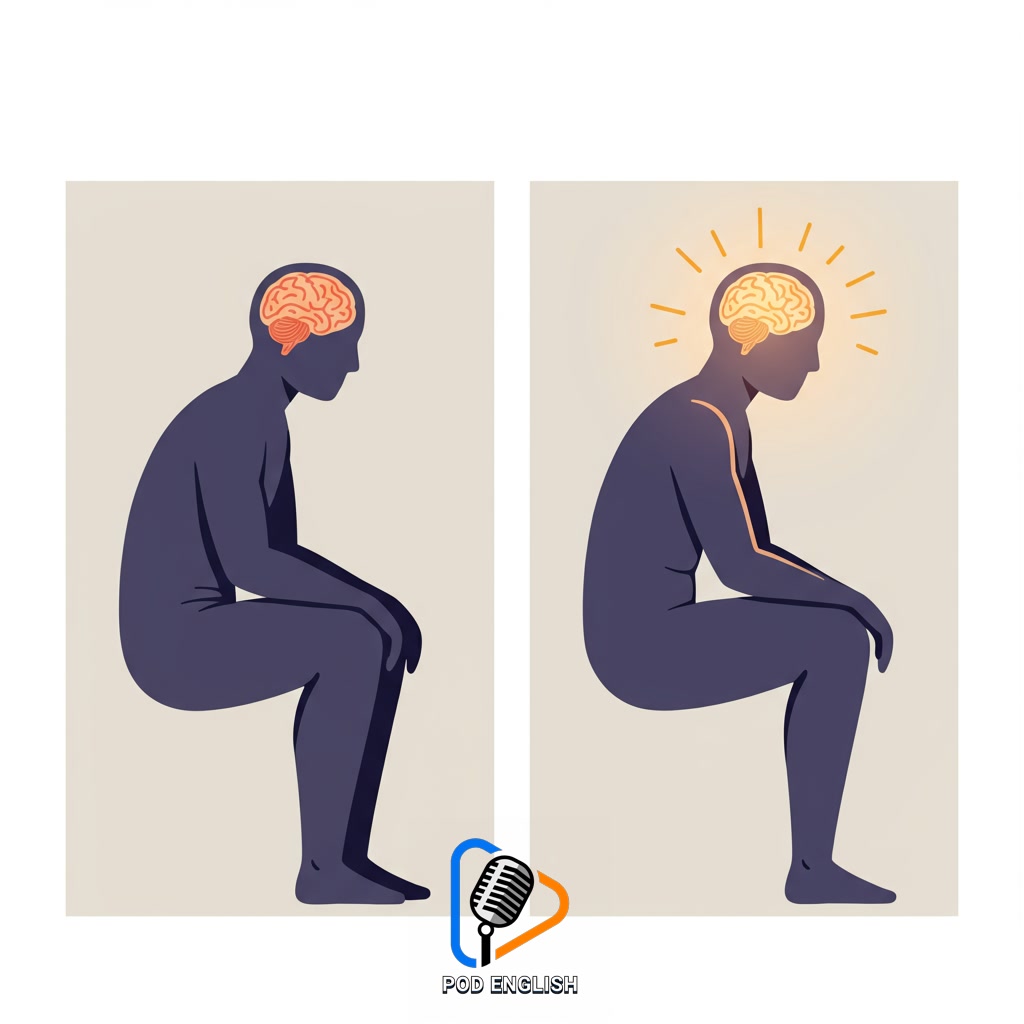
Understanding the Science: How Posture Impacts Your Brain
Section 3: Essential Posture Tips for Sitting While Studying
Building on the importance of concentration, this section delves into the science behind how posture impacts your brain function. When you adopt good posture, sitting or standing tall, you allow your body to function more efficiently, which directly benefits your focus during tasks like learning English. For optimal sitting posture while studying, ensure your back is straight and supported, ideally against a chair back. Keep your feet flat on the floor or a footrest, avoiding crossed legs, which can restrict circulation. Position your computer screen or book at eye level to prevent neck strain, and relax your shoulders. Proper alignment reduces physical discomfort and fatigue, enabling you to maintain alertness and better absorb new vocabulary and grammar rules, making your English study sessions more effective and productive.
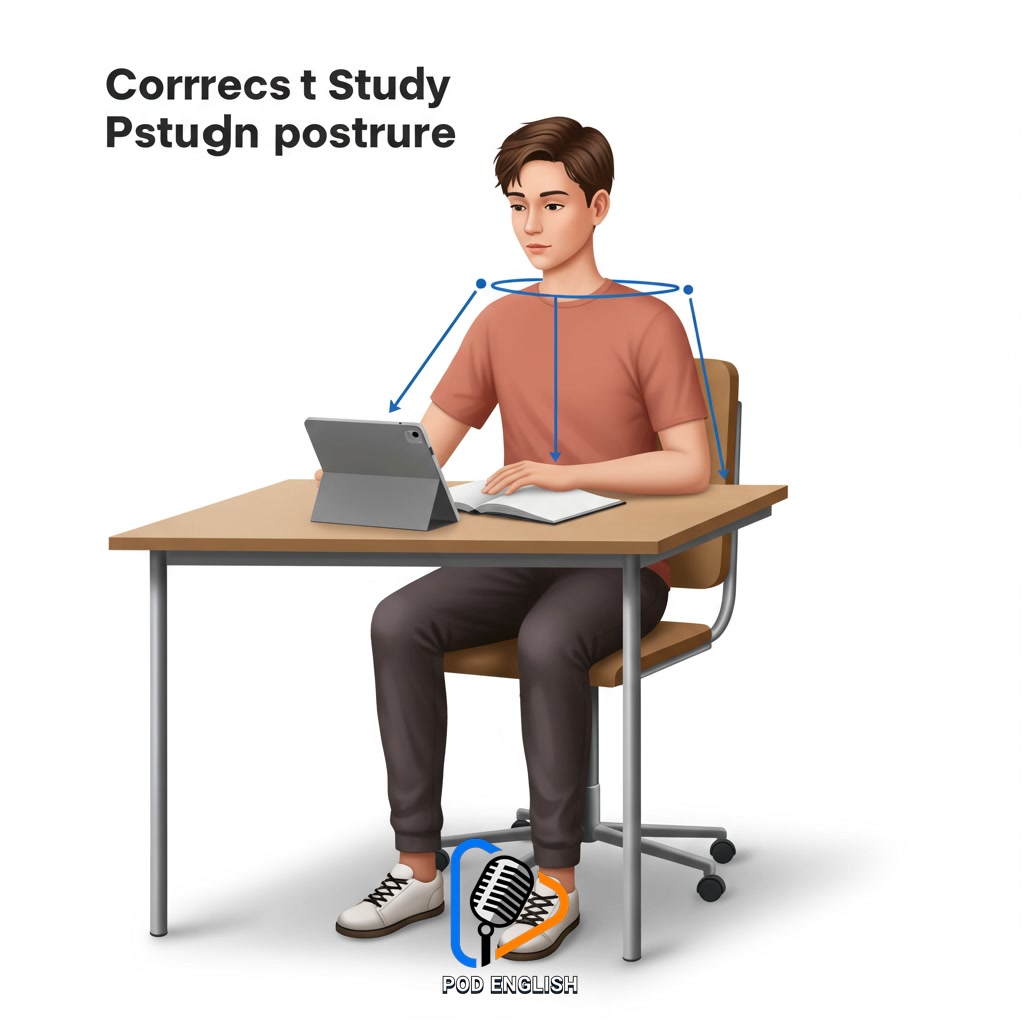
Essential Posture Tips for Sitting While Studying
Section 4: Exploring Standing and Movement for Enhanced Focus
Building on how stable posture enhances focus, this section explores the dynamic benefits of standing and integrating gentle movement into your study routine, particularly for English learning. Shifting from prolonged sitting to standing can increase blood flow and oxygen to the brain, combating fatigue and boosting alertness. Consider using a standing desk while reviewing vocabulary or practicing grammar exercises. Even small movements like shifting weight or taking a short walk during a listening comprehension session can help maintain concentration and prevent your mind from wandering. By incorporating standing and movement, you create a more active state that keeps your brain engaged and receptive to new English information, making your study time more productive and focused.

Exploring Standing and Movement for Enhanced Focus
Section 5: Common Posture Mistakes to Avoid During Study Sessions
While exploring dynamic posture and movement is beneficial, it’s equally crucial to recognize and avoid common static posture mistakes that can hinder your focus during English study sessions. Slouching with a rounded back and slumped shoulders restricts breathing and puts strain on your spine, leading to fatigue and reduced concentration. Hunching too closely over your desk or screen strains your neck and eyes. Leaning heavily to one side or crossing your legs incorrectly can misalign your body, causing discomfort and distracting pain over time. Maintaining these poor positions reduces blood flow and alertness, making it harder to absorb new vocabulary, understand complex grammar, or practice speaking effectively. Becoming aware of these habits is the first step to correcting them and creating a more supportive physical environment for focused learning.
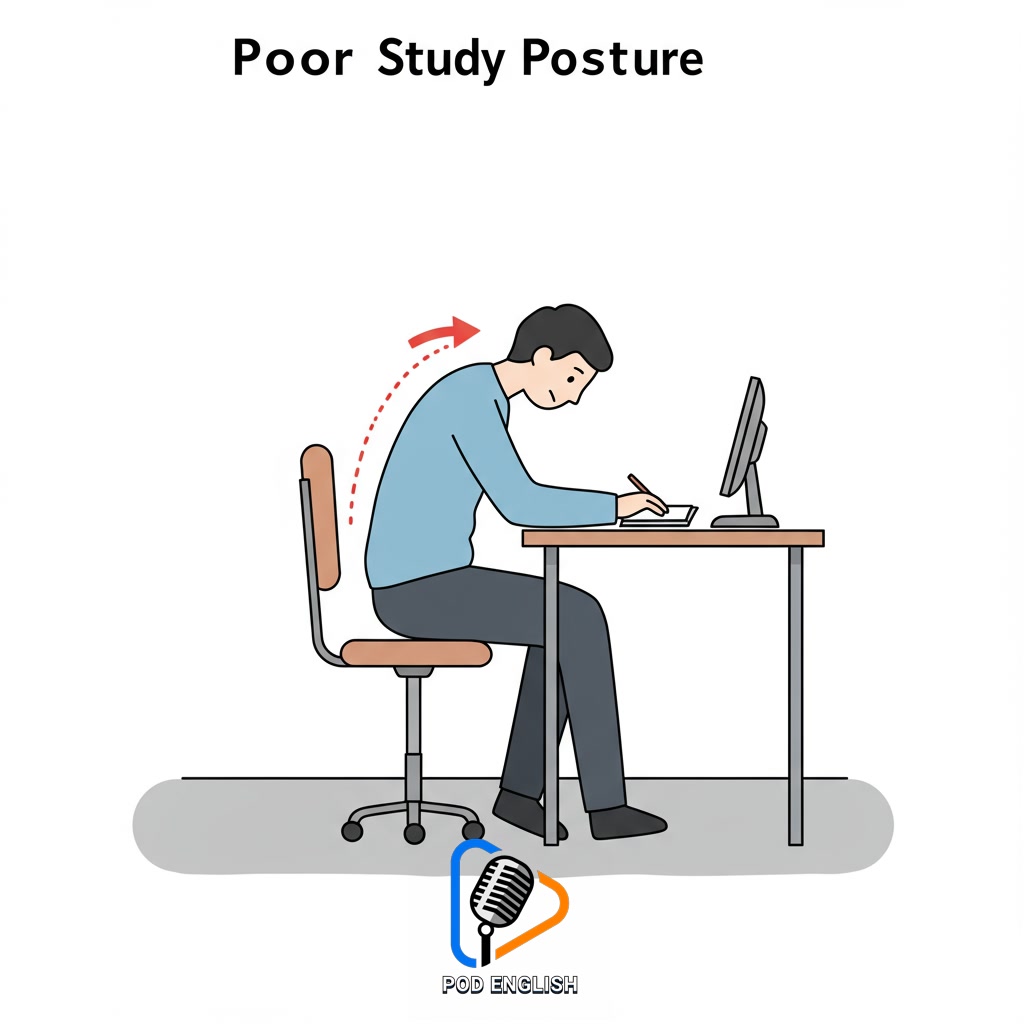
Common Posture Mistakes to Avoid During Study Sessions
Section 6: Integrating Good Posture into Your English Learning Routine
Building on the importance of avoiding poor static postures, the next step is actively integrating good posture habits into your regular English learning routine. This isn’t about being rigid, but rather developing a conscious awareness of your body while you study. Begin each study session by checking your posture – are your feet flat, back straight, shoulders relaxed, and screen/book at eye level? Use short breaks (every 25-30 minutes) not just for rest, but also to stand up, stretch lightly, and reset your posture before returning to your English materials. Consider setting a silent alarm or using a posture reminder app as prompts. By consistently incorporating these simple checks and adjustments, maintaining optimal posture becomes a natural part of your learning process, directly supporting sustained focus and productivity for mastering English.
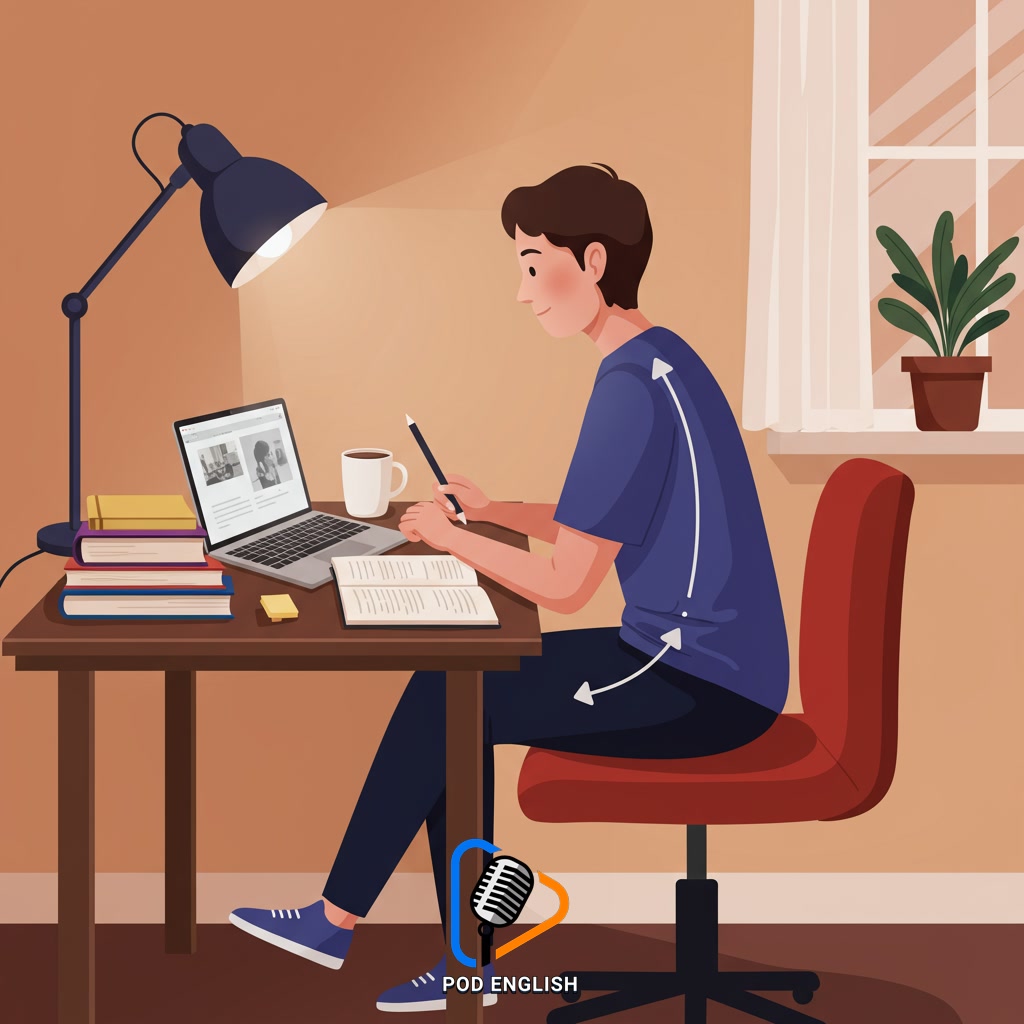
Integrating Good Posture into Your English Learning Routine
Section 7: Beyond Posture: Combining Physical Well-being with Effective English Study
Moving beyond simply avoiding poor static positions, the true benefit lies in actively integrating good posture and overall physical well-being into your English learning routine. This means not only sitting or standing correctly while studying but also incorporating brief periods of movement or stretching. Staying in one fixed position for too long can lead to discomfort and fatigue, which directly hinders concentration. By ensuring your body is comfortable and energized through mindful posture and occasional breaks, you create an optimal physical state that supports sustained mental effort. This holistic approach, where physical comfort complements cognitive focus, is crucial for effective and efficient English language acquisition, allowing you to absorb information more readily and maintain alertness throughout your study sessions.

Beyond Posture: Combining Physical Well-being with Effective English Study













